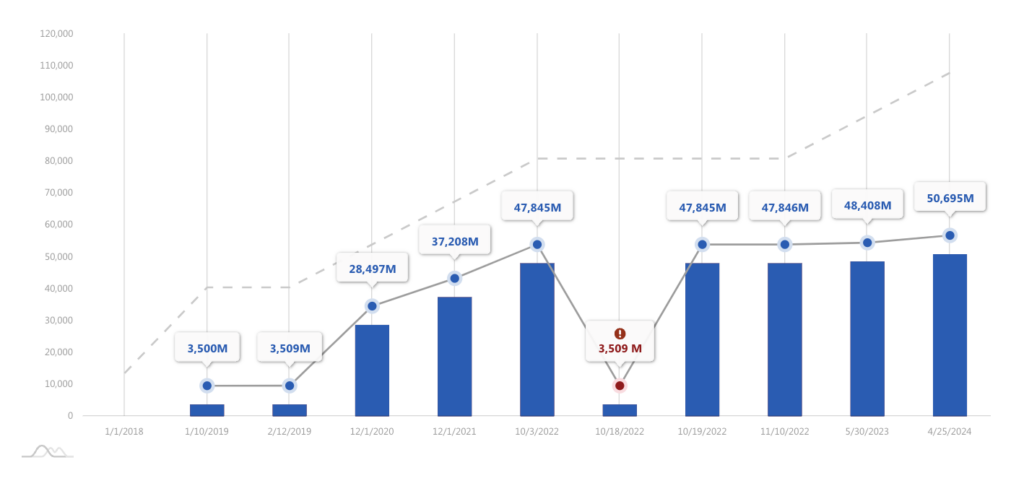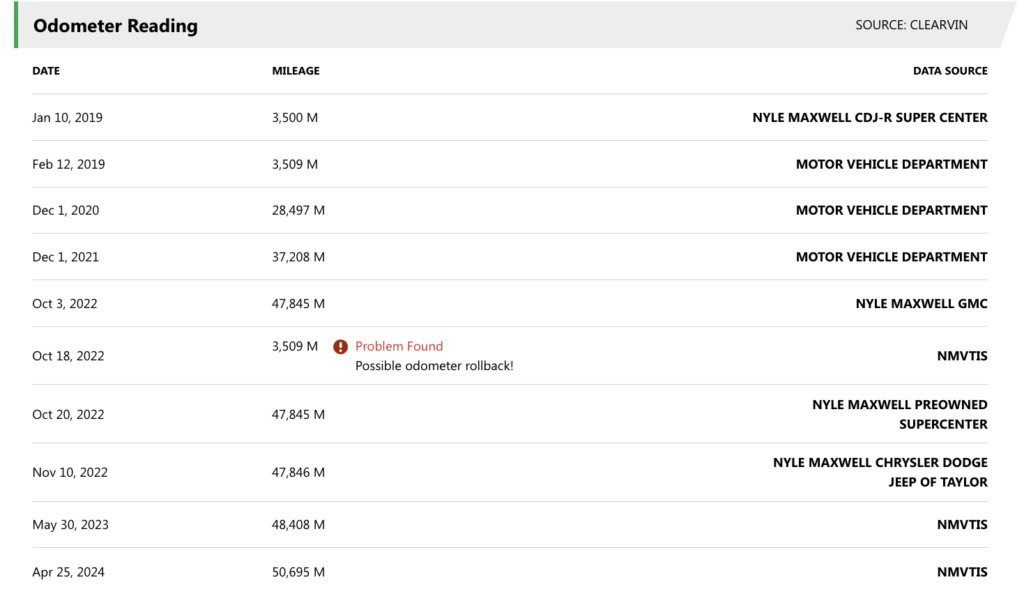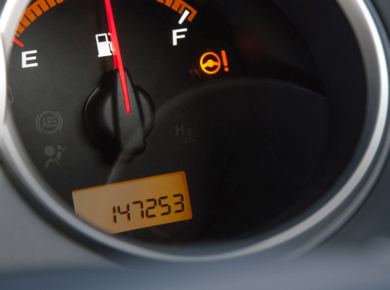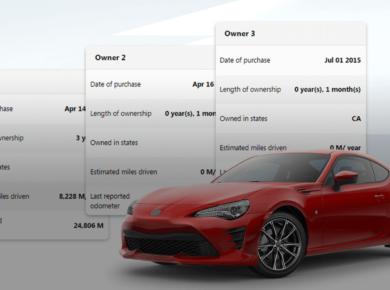Manipulating the vehicle’s mileage reading, also known as odometer fraud, is more common than people would think. Dishonest sellers often roll back the odometers in order to make a car look less used than it really is. However, you can protect yourself by learning how to check car mileage and detect odometer discrepancies.
What Is Odometer Fraud?
Odometer fraud is an illegal activity that involves changing the vehicle’s mileage reading to show a lower number. This is a common practice that sellers do when they see a chance to make money on a car.
A mileage rollback vehicle could sell for a few thousand dollars more compared to a car with higher miles. That’s where knowing how to check car mileage comes into play. Using a reliable VIN mileage check service like ClearVin can reveal the car’s actual history, thus, helping you avoid this type of fraud.
Why Check Mileage on a Car?
A low-mileage car signals fewer mechanical issues, an extended lifespan of the vehicle, and also a high resale value. A rollback vehicle would have more mechanical issues and a lower lifespan.
The only one who profits is the seller who rolled down the mileage. In the end, you will overpay and purchase a car that is not in the best shape. So, learning how to check car mileage is essential before buying a used vehicle.
How to Check Car Mileage For Rollbacks and Mileage Discrepancies
Now let’s learn how to spot odometer fraud, rollbacks and mileage discrepancies on a car.
Use a Mileage Checker by VIN
The VIN number is the vehicle’s identification number. Basically this number is like your social security number but for your car. This number is unique to a vehicle. A VIN mileage check reveals mileage records reported over the years:

By running a check mileage by VIN, you can uncover any inconsistencies in the vehicle’s mileage history. When the VIN check for mileage shows abrupt drops in reported miles, it could indicate a rollback or possibly a replaced engine. ClearVin, for instance, offers a VIN check mileage history service that pulls records from sources like dealerships and insurance companies.
Examine the Car’s Service Records
Check the service records. Look for any documentation with mileage information and compare this information with the odometer reading. If you find gaps between service dates, this could be an indication that the mileage has been rolled back. The service records often reveal these inconsistencies, so be sure to request service history from the seller.
Check the Interior and Exterior for Signs of Wear
One characteristic of all high-mileage vehicles is the sign of use. These cars have worn pedals, faded upholstery, and steering wheel marks. If the car’s interior looks more damaged from use than the displayed mileage suggests, you may be looking at a car with an altered odometer. This is why a mileage check via VIN is always a good idea.
Conduct a Digital Odometer Check
Digital odometers are harder to tamper with but not immune to this manipulation. With only a simple computer program, a dishonest seller can rollback the mileage to his preferred number. An odometer fraud check through ClearVin can often detect if the mileage has been altered. Always compare the odometer reading with the reported mileage on mileage check VIN services to spot potential fraud.
Run a Check with the National Motor Vehicle Title Information System (NMVTIS)
Checking the National Motor Vehicle Title Information System is also a good idea. The NMVTIS database, along with services like ClearVin, compiles mileage information from DMV reports, salvage auctions, and insurance companies:

A VIN odometer check through these sources can reveal clues that wouldn’t be visible otherwise. ClearVin provides access to this data, helping you detect odometer fraud. In the ClearVin report, you also get a warning that says potential odometer fraud.
Look for Dashboard Warning Signs
In some cases, dashboard tampering in older cars with a mechanical odometer will leave visible signs, such as loose or misaligned components. When someone alters a digital odometer, they may need to remove the dashboard, which can leave some damage marks or gaps around the frame. This can indicate a potential digital odometer rollback.
Steps to Check Mileage History by VIN Online
Here’s how to check car mileage or how to perform a mileage check by VIN online:
- Get the VIN Number
Locate the VIN on the car’s dashboard (on the bottom of the windshield) or door frame. The VIN number is a unique 17-character code. - Use a Reliable VIN Mileage Check Tool
Enter the VIN into a trusted car history checker, such as ClearVin. With ClearVin, for instance, you can grab a history report and view any previous mileage readings. If the mileage has been tampered with, you get a special warning indicating this. - Check for Any Mileage Discrepancies
Compare the odometer reading on the car with the last reported mileage check by VIN. If you see unusual drops or gaps, consider it a potential sign of fraud. - Review the Report for Odometer Fraud Alerts
A VIN check for mileage report might include a warning if the vehicle’s mileage doesn’t align with reported records. This is one of the easiest ways to check mileage on car without a trip to a mechanic.
Common Signs of Odometer Rollback
Now let’s take a look at the common signs of odometer rollback that you might encounter.
- Sudden Mileage Decreases in History Reports
When the car’s mileage suddenly drops or doesn’t follow a typical increase. This could mean a possible rollback. This is especially true if you find evidence of high mileage and a sudden drop. - Odd Service Records
Sometimes, mileage discrepancies become clear by comparing oil change and service records. These records are a clear giveaway of an odometer rollback. If you notice a mileage check via VIN showing a sudden mileage decrease in service records, it’s worth investigating the situation. - Wear That Doesn’t Match the Mileage
Check for worn-out items in vehicles such as: seats, the steering wheel, and the pedals. If the wear does not match with the mileage check VIN report, it can indicate a possible mileage rollback.
Using ClearVin for Mileage Verification
ClearVin provides one of the best free VIN mileage check services, where you can access mileage records and other vital details about the car’s past. Here’s how a car mileage check by VIN with ClearVin can help:
- Access Mileage History: By running a mileage check by using the VIN, you get mileage entries from previous owners and inspections. This makes it easy to spot inconsistencies.
- View Odometer Fraud Alerts: In the history report, ClearVin flags unusual mileage patterns. This helps you detect fraud early.
- Compare Service Dates and Mileage: Each VIN free mileage check gives you a rundown of service visits and reported mileage. ClearVin organizes these services in a way that’s easy to follow, so you can easily detect any strange changes.
- Analyze Wear Patterns and Mileage: A car mileage check VIN through ClearVin also provides guidance on comparing vehicle wear with mileage. Usually, if the interior is too worn out, it means the mileage is high.
How to Tell if an Odometer Has Rolled Over
Older cars with mechanical odometers sometimes roll over after reaching their limit of 99,999 miles. Some VIN check mileage reports might even document a “rollover” event. Here’s how to identify if an odometer has rolled over:
- Look for Unusual Patterns: Older odometers record in increments that may appear as rounded numbers after rolling over.
- Request a VIN Check for Mileage: Some services track rollovers in their mileage VIN check databases. ClearVin can sometimes detect a rollover if it was reported during inspections.
- Check for Wear: A car with only 10 to 50,000 miles shouldn’t have significant wear, so check areas like the upholstery, steering wheel, and brake pedals.
Can You Check Car Mileage Online? Yes, With ClearVin!
With online tools such as ClearVin, checking mileage on a car is now accessible to everyone. The platform provides you with auto check mileage discrepancy reports that compare various data points to flag any inconsistencies.
How to check car mileage by VIN is now as easy as entering the VIN into ClearVin’s vehicle mileage check tool and voilà, you have all of the information you need about the odometer readings and any possible rollbacks!
Final Thoughts
Spotting a fake mileage or odometer discrepancy requires a careful eye and the right tools. By using a mileage checker by VIN such as ClearVin and examining a car’s service history, wear patterns, and other signs, you’ll be able to quickly evaluate whether or not this is a good deal..
When in doubt, turn to a trusted odometer fraud check service like ClearVin, which helps you see the full picture. With ClearVin, you can ensure the vehicle’s odometer reading matches its actual usage history.
Don’t risk buying a car with questionable mileage, get peace of mind and check car mileage by VIN with ClearVin.










